Topics
How to Grow Dill Weed and Dill Seed for Delicious Summer Recipes
Herb growing tipsFresh dill is the perfect herb for growing in your home vegetable garden. Its distinct flavor and fresh aroma are ideal for summer recipes like potato salad, garden peas, zucchini boats, pasta salad, and even flaky biscuits.
Dill is an incredibly easy herb to grow and a welcome companion plant. Beginner gardeners and avid pickle makers alike will enjoy adding dill to their garden plan.

Planting dill in the home garden
How to grow dill from seed
Dill seeds are very easy to plant. It’s as simple as moistening the soil and spreading out the seeds.
Since dill does not transplant well, you will want to sow dill seeds in the spot you want them to grow in for their entire season.
Dill can tolerate cool temperatures but is not frost tolerant. So wait until all danger of frost is passed before sowing dill seeds outdoors.
Soil temperature should be 65º to 70º F for the best seed germination.
Dill seeds need light to germinate, so once you sprinkle them onto the soil, you only have to press them into the ground.
Seeds will germinate between 10 and 20 days.
Dill seeds are big enough to spread several inches apart to avoid having to thin plants later.
If you get a late frost, cover the tender seedlings to protect them.
Succession planting every 2 to 3 weeks will give you a fresh supply of dill weed all summer.
Growing tips for dill plants
Grow dill in well-drained soil that is slightly sandy with moderate amounts of organic material. With healthy soil to start with, dill won’t need additional fertilizer unless it is being grown in a container.
Dill is a warm-weather crop that loves sunshine. So choose a location that receives at least 6 to 8 hours of direct sunlight daily.
Thin dill seedlings to give plants room to grow. Space plants 6” to 12” apart, and they will grow 3 to 5 feet tall.
Feathery dill leaves won’t shade out other plants, which makes dill an excellent herb for interplanting. Dill can be grown with cucumbers and other plants in the squash family. It also grows well with okra because of their similar growing requirements.
Dill needs consistent watering so that the roots don’t dry out. Adding mulch around the dill plants will keep weeds out and conserve moisture.
Dill is an annual, but it will self-sow. When choosing a location for your dill plants, you can plan your garden to leave dill in an area where it can reseed itself from year to year.
When dill is allowed to flower, it attracts beneficial insects. These beneficial insects will eat other insects, such as aphids that attack most garden plants. Pollinators will also be attracted to the dill flowers and help pollinate the whole garden.
Solutions for dill pests and diseases
It can be alarming to see bright green caterpillars on your dill plants. Most likely, these will be Black Swallowtail Butterfly larvae. Dill is a host plant for these beautiful butterflies. You will want to plant extra dill in your garden so there’s enough for you and the butterflies since they will help pollinate your other plants.
How to harvest dill weed
How do you know when dill is ready to pick? Dill can be used throughout its growing cycle. Fresh dill leaves can be picked from the plant when it is about 8” high.
Use sharp garden shears to cut off stalks of dill. Cutting off leaves will encourage more growth of side branches. But don’t take off more than 1/3 of the plant at a time if you want your dill plant to continue growing.

Dill weed vs dill seed
Much like cilantro, dill plants have two distinct parts that are used separately in recipes.
If a recipe calls for dill weed, it is referring to the feathery parts of the dill plant. And although dried dill is an option, fresh dill from your garden will be much more flavorful. It is also a beautiful garnish.
When a recipe calls for dill seeds, you will use the dried seeds that develop on the flower heads. The dill seeds have a slightly different flavor, and they are typically used in cooked dishes and pickling.
Some recipes, such as for pickles, will use all parts of the dill plant.
How to harvest dill seed
To harvest dill seed, let the dill plants grow until they flower. After the beautiful umbrella-like flowers bloom, the dill seeds will develop. During this time, the flowers will also attract butterflies and other beneficial pollinators. Wait for the seeds to develop and start turning brown. Then, cut off the plant tops and place them in a paper bag. When the seeds are sufficiently dry, shake the bag to separate the seeds from the plant. Then place the dry dill seeds in glass, airtight containers away from heat and light.
Growing dill weed in containers
Dill weed can be grown in containers both indoors and outside. For container growing, choose a pot that is at least 12” deep and drains well. Keep the soil moist and add a 5-10-5 fertilizer every 4 to 6 weeks. When growing dill weed indoors, it is often more spindly since it doesn’t get as much sunlight.
For seasoning mixes, salad dressings, and pickles, you’ll love having fresh dill weed and dill seed to complement all your summer vegetables. Our delicious dill pickle recipe will guide you through the pickling process. So plan now to add this easy-to-grow herb to your summer garden.
And make sure you have enough dill for all your favorite recipes!





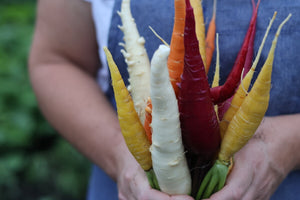
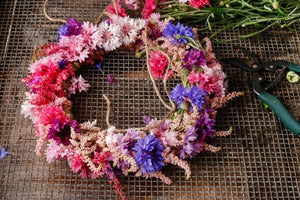
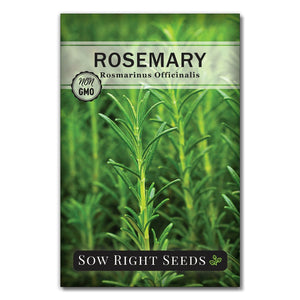
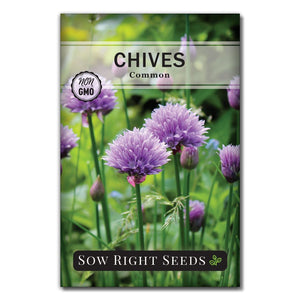
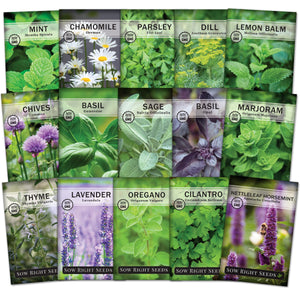
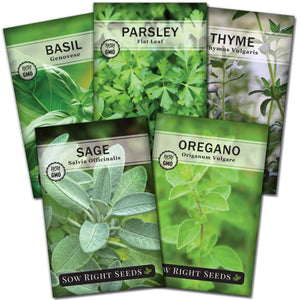
Leave a comment